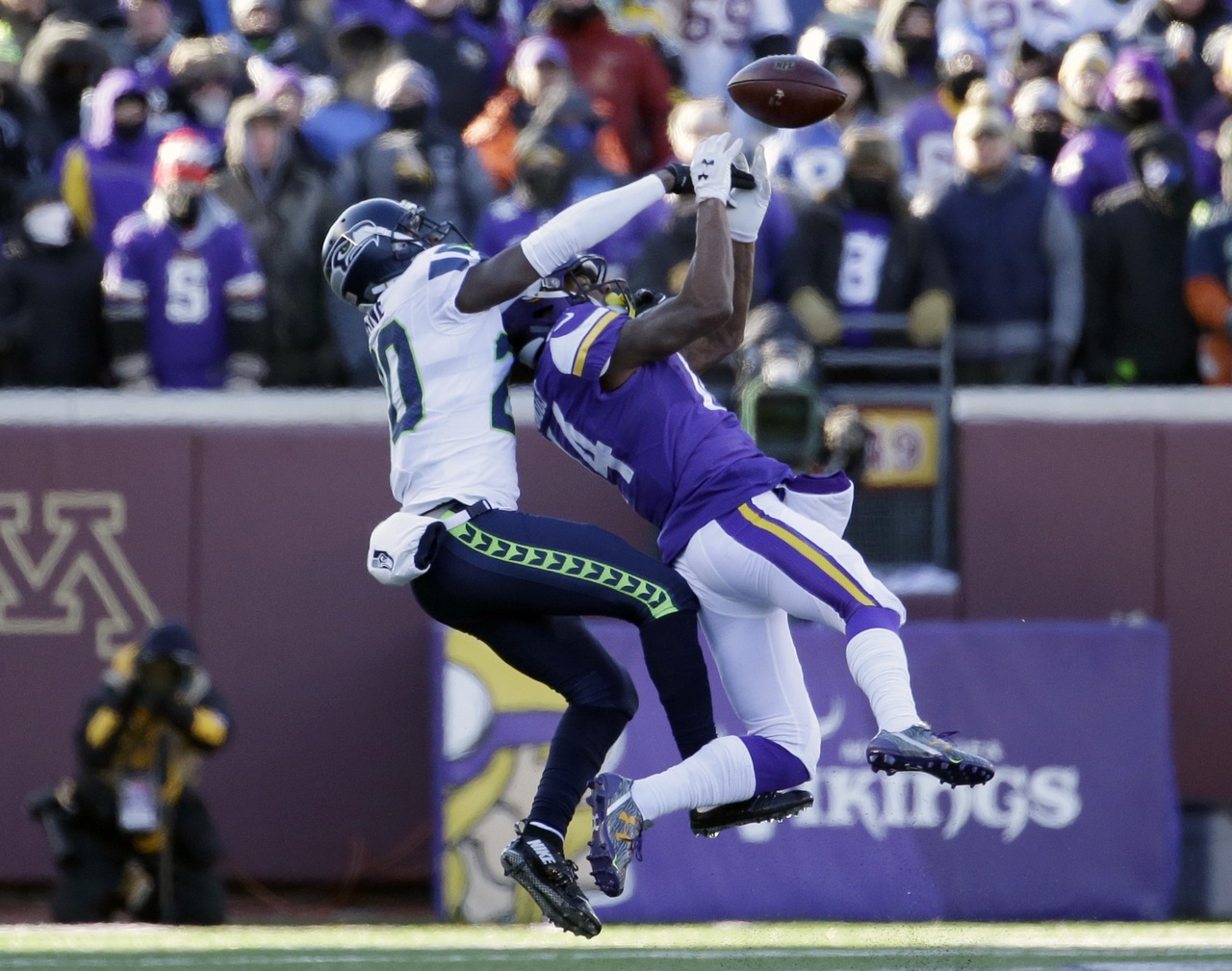The Monday after the Seattle Seahawks’ regular season ended, nearly all talk was about playoffs, the pending game at Minnesota and playing in conditions that resembled the chest freezer in ex-Vikings coach Bud Grant’s basement, filled with fresh venison.
Lost in the anticipation was an admission by coach Pete Carroll. Responding to a question about pushing his young offensive linemen so hard into starting jobs that it helped induce losses, Carroll said the club made a personnel-judgment error. The mistake was the largest factor in the loss of home-field advantage in the playoffs, and informs some of what transpires this offseason.
“I think we might have overshot it a little bit on that one,” he said, referring to starting rookie Drew Nowak at center, second-year man Justin Britt at left guard and second-year man Garry Gilliam at right tackle. “I think we thought that they would move along more quickly. We didn’t adjust soon enough.”
While some will say he was merely stating the obvious, some sports executives can go entire careers without being accountable. While owning the mistakes that helped create the 2-4 start, Carroll also wanted credit for changing personnel and tactics at midseason that worked out well.
“I think we missed the opportunity to do that in game three or four, somewhere in there,” he said. “We knew we had to do something. The bye week (Nov. 8, at 4-4) was when it was glaring and we had to do something drastically to change the course of events. We did that.”
The Seahawks replaced Nowak with Patrick Lewis and tightened the routes and timing of the passing game. Despite the injury absences of RB Marshawn Lynch and TE Jimmy Graham, the Seahawks were the NFL’s most prolific offense over the second half of the regular season.
So really, how bad was the O-line by the end of the year? It not only no longer needed to be in the critical care unit at Harborview Hospital, it is perhaps not even atop the Seahawks’ offseason priority list.
The scouting combine is underway in Indianapolis, free agency begins March 9 and the draft is at the end of April. The popular assumption among Seahawks followers is that the O-line comes first. Could be true, especially this year with the pending free agency of LT Russell Okung and RG J.R. Sweezy.
Then again, if we have learned anything watching Carroll, it is that the Seahawks never do the obvious.
“We looked at how we dealt with the offensive line in the first half of last season and how we transitioned in the second half,” Carroll told reporters in Indianapolis Thursday. “After the bye, we improved tremendously. Our numbers flip-flopped in terms of the pressures and sacks. We saw the productivity of our passing game really go up.
“We still have some issues. Hopefully, we’ve made enough strides that we can start at a better level next year than we did last year.”
After the loss to Carolina that ended the postseason, Carroll heaped praise on two seldom-seen draftees, O-linemen Mark Glowinski and Kristjan Sokoli, who basically had redshirt seasons. Sokoli is another of the Seahawks’ conversions from the collegiate defensive line (Buffalo), but in his case, he was afforded a year’s apprenticeship.
While it shouldn’t be assumed the pair will fill the voids should Okung and Sweezy leave, I will submit that in the Seahawks’ position hierarchy under Carroll, there is a more urgent need: cornerback.
The spot opposite Richard Sherman last season was the defense’s weakest link. It was occupied for the first 10 games by Carroll’s other personnel bust in 2015: Cary Williams.
A rare midseason firing of a veteran — Williams, 30, was cut after the game 10 win over the 49ers — tells all that needs to be said about free-agent signee Williams’ inability to play the position to the specs demanded by the Seahawks.
Backup DeShawn Shead filled in reasonably well, and was supplanted when Jeremy Lane returned to health. But Lane is a free agent who, despite playing only six games in 2015, might get an offer the Seahawks can’t match.
That would be a major blow. The Williams experience may make the Seahawks gun-shy about hiring a veteran free agent and expecting a smooth transition. But adding a rookie draftee could be a first-year reach, as was the O-line in 2015.
So Lane just might be the top priority, because Carroll’s plan always puts defense first. And the priority among the defense’s three units is always the secondary.
That’s why Sherman, FS Earl Thomas and SS Kam Chancellor take up such a large chunk of salaries under the cap: Carroll believes that denial of the big play, either over the top or on the perimeter, is where the game pivots for defense, offense and special teams.
Filling the CB spot, not the O-line or D—line, would seem to be the prime directive. But as has been seen, the Seahawks more often have done that from deeper in the draft — Sherman and Chancellor were fifth-rounders, Lane a sixth-rounder. Only Thomas was taken with the high treasure of a first-round pick.
Should Lane go elsewhere, a list of free-agent cornerbacks here by Pro Football Focus, led by Carolina’s Josh Norman, which projects salary ranges, shows prices are steep. Still …
With that 31-point, first-half blitz by the Panthers still vivid in Carroll’s mind, don’t be shocked if he decides that if the cap allows him but one major free agent play, the money goes into the secondary and not to a beefy boy up front.
Carroll’s football DNA will make irresistible the opportunity to be the NFL’s best defense for five consecutive years. He trusts that line coach Tom Cable and QB Russell Wilson will figure out the other stuff.
Art Thiel is co-founder of sportspressnw.com.
Talk to us
> Give us your news tips.
> Send us a letter to the editor.
> More Herald contact information.

























